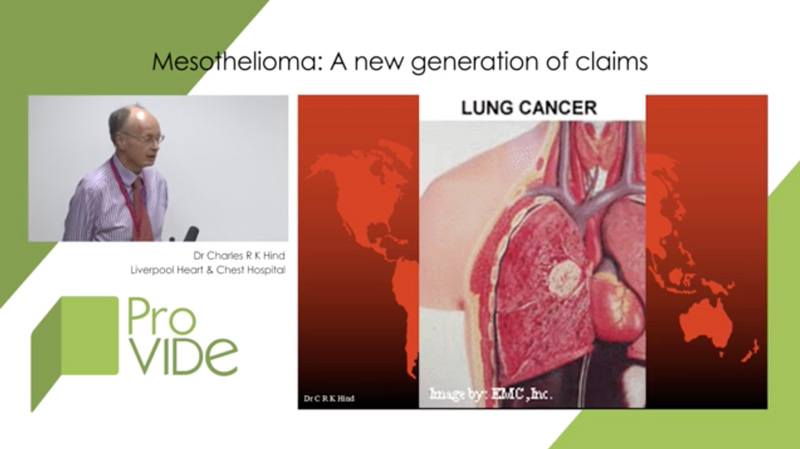Mesothelioma: a new generation of claims
[fusion_builder_container hundred_percent=”yes” overflow=”visible”][fusion_builder_row][fusion_builder_column type=”1_1″ background_position=”left top” background_color=”” border_size=”” border_color=”” border_style=”solid” spacing=”yes” background_image=”” background_repeat=”no-repeat” padding=”” margin_top=”0px” margin_bottom=”0px” class=”” id=”” animation_type=”” animation_speed=”0.3″ animation_direction=”left” hide_on_mobile=”no” center_content=”no” min_height=”none”][fusion_vimeo id=”109470161″ width=”767″ height=”450″ autoplay=”yes” api_params=”” class=””][fusion_separator style_type=”none” top_margin=”20px” bottom_margin=”20px” sep_color=”#dbdbdb” border_size=”1px” icon=”fa-play” icon_circle=”yes” icon_circle_color=”” width=”” alignment=”center” class=”” id=””/][/fusion_builder_column][fusion_builder_column type=”2_3″ last=”no” spacing=”yes” center_content=”no” hide_on_mobile=”no” background_color=”” background_image=”” background_repeat=”no-repeat” background_position=”left top” hover_type=”none” link=”” border_position=”all” border_size=”0px” border_color=”” border_style=”” padding=”” margin_top=”” margin_bottom=”” animation_type=”” animation_direction=”” animation_speed=”0.1″ animation_offset=”” class=”” id=””][fusion_title size=”3″ content_align=”left” style_type=”default” sep_color=”” margin_top=”” margin_bottom=”20px” class=”” id=””]About this Webinar[/fusion_title][fusion_text]
This webinar examines the new generation of mesothelioma cases currently before the courts.
Participants and their topics include:
- Dr Charles Hind, Consultant Chest Physician, “Developments and trends in diagnosis and treatment”;
- Martin Stear, Chartered Occupational Hygienist, “The developing knowledge of risk from ACMs in the structure of buildings”; and
- Charles Feeny, Barrister St. Johns Buildings, “Breach and minimal exposure”.
1.5 CPD points.
We are grateful to Weightmans and to our delegates who assisted hugely contributing to the Q&A session making it an informative session.[/fusion_text][/fusion_builder_column][fusion_builder_column type=”1_3″ last=”yes” spacing=”yes” center_content=”no” hide_on_mobile=”no” background_color=”” background_image=”” background_repeat=”no-repeat” background_position=”left top” hover_type=”none” link=”” border_position=”all” border_size=”0px” border_color=”” border_style=”” padding=”” margin_top=”” margin_bottom=”” animation_type=”” animation_direction=”” animation_speed=”0.1″ animation_offset=”” class=”” id=””][fusion_title size=”3″ content_align=”left” style_type=”default” sep_color=”” margin_top=”” margin_bottom=”20px” class=”” id=””]Supporting Documents[/fusion_title][fusion_button link=”http://pvl.helloplaza.uk/wp-content/uploads/2016/04/Supporting-Questions-and-CPD-Code.pdf” color=”default” size=”” stretch=”yes” type=”” shape=”” target=”_blank” title=”Download” gradient_colors=”|” gradient_hover_colors=”|” accent_color=”” accent_hover_color=”” bevel_color=”” border_width=”” icon=”fa-folder” icon_position=”left” icon_divider=”yes” modal=”” animation_type=”0″ animation_direction=”left” animation_speed=”1″ animation_offset=”” alignment=”center” class=”” id=””]Supporting questions and CPD code[/fusion_button][fusion_separator style_type=”none” top_margin=”20px” bottom_margin=”” sep_color=”” border_size=”” icon=”” icon_circle=”” icon_circle_color=”” width=”” alignment=”center” class=”” id=””/][fusion_button link=”http://pvl.helloplaza.uk/wp-content/uploads/2016/04/Feedback-questions.pdf” color=”default” size=”” stretch=”yes” type=”” shape=”” target=”_blank” title=”Download” gradient_colors=”|” gradient_hover_colors=”|” accent_color=”” accent_hover_color=”” bevel_color=”” border_width=”” icon=”fa-folder” icon_position=”left” icon_divider=”yes” modal=”” animation_type=”0″ animation_direction=”left” animation_speed=”1″ animation_offset=”” alignment=”center” class=”” id=””]Feedback questions[/fusion_button][fusion_separator style_type=”none” top_margin=”20px” bottom_margin=”” sep_color=”” border_size=”” icon=”” icon_circle=”” icon_circle_color=”” width=”” alignment=”center” class=”” id=””/][fusion_button link=”http://pvl.helloplaza.uk/wp-content/uploads/2016/04/Malignant-mesothelioma-Pro-Vide-2014-2.pdf” color=”default” size=”” stretch=”yes” type=”” shape=”” target=”_blank” title=”Download” gradient_colors=”|” gradient_hover_colors=”|” accent_color=”” accent_hover_color=”” bevel_color=”” border_width=”” icon=”fa-folder” icon_position=”left” icon_divider=”yes” modal=”” animation_type=”0″ animation_direction=”left” animation_speed=”1″ animation_offset=”” alignment=”center” class=”” id=””]Dr Hind’s powerpoint presentation[/fusion_button][fusion_separator style_type=”none” top_margin=”20px” bottom_margin=”” sep_color=”” border_size=”” icon=”” icon_circle=”” icon_circle_color=”” width=”” alignment=”center” class=”” id=””/][fusion_button link=”http://pvl.helloplaza.uk/wp-content/uploads/2016/04/Mesothelioma-a-new-generation-of-claims.pdf” color=”default” size=”” stretch=”yes” type=”” shape=”” target=”_blank” title=”Download” gradient_colors=”|” gradient_hover_colors=”|” accent_color=”” accent_hover_color=”” bevel_color=”” border_width=”” icon=”fa-folder” icon_position=”left” icon_divider=”yes” modal=”” animation_type=”0″ animation_direction=”left” animation_speed=”1″ animation_offset=”” alignment=”center” class=”” id=””]Charles Feeny’s powerpoint presentation[/fusion_button][fusion_separator style_type=”none” top_margin=”20px” bottom_margin=”” sep_color=”” border_size=”” icon=”” icon_circle=”” icon_circle_color=”” width=”” alignment=”center” class=”” id=””/][fusion_button link=”http://pvl.helloplaza.uk/wp-content/uploads/2016/04/Martin-Stear-16-Oct-14-2.pdf” color=”default” size=”” stretch=”yes” type=”” shape=”” target=”_blank” title=”Download” gradient_colors=”|” gradient_hover_colors=”|” accent_color=”” accent_hover_color=”” bevel_color=”” border_width=”” icon=”fa-folder” icon_position=”left” icon_divider=”yes” modal=”” animation_type=”0″ animation_direction=”left” animation_speed=”1″ animation_offset=”” alignment=”center” class=”” id=””]Martin Stear’s powerpoint presentation[/fusion_button][/fusion_builder_column][/fusion_builder_row][/fusion_builder_container]



